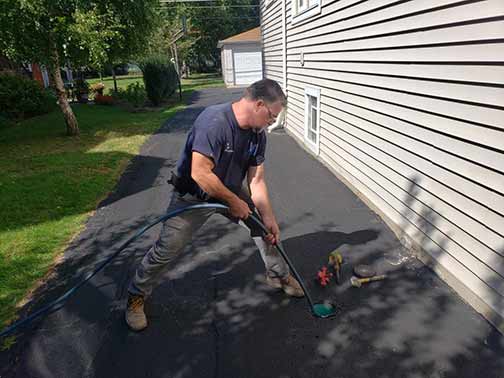
If you are asking this question, it probably means you are looking for a drain-cleaning method with long-term results to help you deal with the persistent clogs/blockages in your drains, says Modulus Cleanrooms Management. If this is true, I am glad to tell you that you are in the right place.
Hydro-jetting is a versatile and effective drain-cleaning method for cleaning commercial and residential drainage systems. The great thing about hydro-jetting is its ability to clear the blockages inside your drains and wash the debris out of the pipes.
But how long will your drain lines stay clean after hydro-jetting? Depending on the drain line’s size and the buildup, hydro-jetting will take between 30 and 60 minutes to complete, but the results can last for months and years.
How long does hydro-jetting last?
When using hydro-jetting for preventive maintenance (as a way to optimize performance and flow), the effects of cleaning the pipes can last as long as 22 months. But avoid waiting this long; we recommend you hydro-jet your drainpipes every 18-22 months.
On the other hand, if you are dealing with tree root intrusion into your drain line or main sewer line, it may take 3-7 years for those roots to grow again. How long it takes depends on the proximity of the tree to your drain lines and how fast the roots grow.
Ideally, you should hydro-jet your drains every 12-18 months as part of the general plumbing maintenance plan. If you follow this schedule, you will not need to worry about how long the effects of each hydro-jetting session will last.
Several factors determine how long your drains stay clean after you hydro-jet them. Your drain lines will stay cleaner for longer periods if you don’t abuse them, but you recognize those everyday mistakes that predispose them to clogs and blockages.

When using hydro-jetting for preventive maintenance (as a way to optimize performance and flow), the effects of cleaning the pipes can last as long as 22 months.
Tips to minimize the risk of clogs/blockages in your drains
DO NOT dump FOG into your drains
FOG stands for fats, oil, and grease. The easiest way to dispose of used-up kitchen grease is usually to dump it into the sink drain. Congealed grease combined with other debris is one of the biggest causes of sewer line blockages.
Watch what you flush
DO NOT flush non-biodegradable items into your toilet if they are flushable. Things like paper towels, wipes, diapers, cat litter, etc. will cause problems inside your drain lines. Only water, toilet paper, and human waste should enter the toilet.
Dispose of food waste properly
Kitchen waste such as coffee grounds, eggshells, starchy foods (like rice and mashed potatoes), and stringy veggies can cause blockages inside your drain lines. Trash them in a garbage container.
Install strainers on drain openings
Installing the proper mesh strainer on drains helps to stop buildup from the source. It prevents items like hair and scum from entering the drain. Strainers also filter tiny food particles from the water flowing into your sink drain.
Install a lint filter
Lint, soap residue and other debris get washed into your drains each time you use the washing machine. Your washing machines may have a built-in lint trap. However, this is usually ineffective. Installing a lint filter solves this problem.
Flush your drain lines weekly
To wash debris out of your drains, you may want to do this weekly. Pour a half cup of baking soda and vinegar down the drain and let it sit for one hour. Follow it with warm or hot water. It will remove any grease trapped in the system.
Inspect and clean your drains on a schedule
Being intentional about periodic drain inspections helps you spot issues in your drainage system before they become serious problems. Combining routine inspections with scheduled drain cleaning offers you a powerful tool for preventing drain clogs.

The best way to inspect your drains is by doing a sewer video/camera inspection.
What is the recommended way to inspect and clean your drains?
Sewer camera inspections
The best way to inspect your drains is by doing a sewer video/camera inspection. This involves using a specialized camera to access the deepest corners of the drainage system and assess their condition in real time.
Hydro-jetting
Jetting your drain lines periodically, whether the line is blocked or not, is the most effective way to prevent buildup inside the line. This proactive approach saves you money because it prevents problems and prolongs the life of your pipes.
Lastly, you need an experienced plumber to work with you. A competent plumber helps you extract maximum value from your drainage system while also letting you minimize the cost of owning the system.
An experienced plumber can recognize the warning signs of a budding drain problem and deal with them before they become costly emergencies. A good plumber acts as a guide to help you navigate the difficulties of optimizing the function of your drainage system.